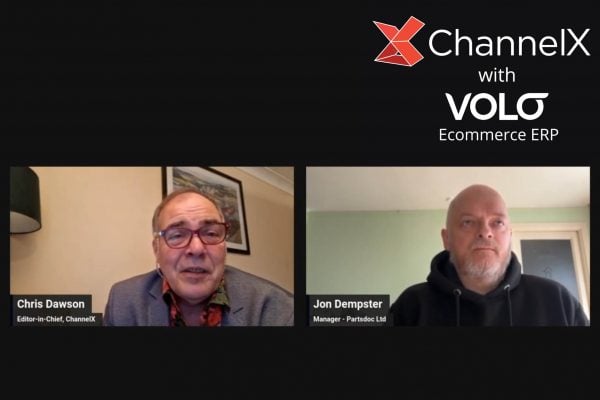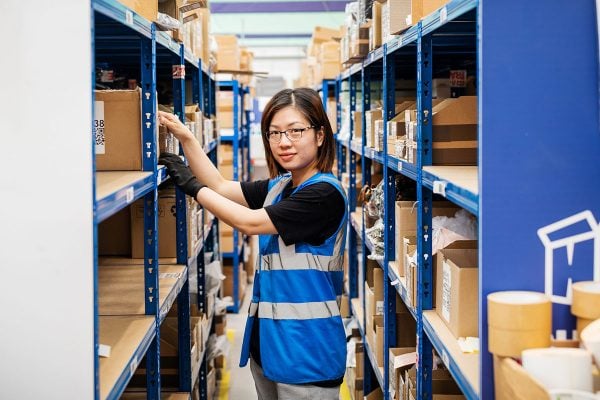In our monthly Know your data, penned by Scott Bagnall, Head of Product at Volo Commerce, we are looking at how you can use data to grow your business. Detailed in a webinar earlier this year, if you’re a Volo customer then the reports are all available to you in the Vision reporting and analytics module, but for non-Volo users you should still be considering the same factors in order to scale and grow your business. We are collating all of the articles here so if you missed one you can find them all in one place.
So far in this series we’ve looked at data analysis and reporting for best sellers, your product sales velocity, your slow or dead stock, your margins, stock forecasting and refunds. Today we’re going to focus on the happy place that is your top customers.
Of all the reports you run, your best sellers and your top customers are sure to regularly figure high up the list. These are the pieces of good news you want to maximise, while at the same time look to eradicate or reduce the pieces of bad news, like dead stock, poor or non-existing margins, high refund counts and so on.
Make sure first of all that you’re not looking at your top customers through ‘vanity’ metrics like sales. Some of these customer might also return a lot of items, or have a propensity to request refunds for example, so make sure that they’re still top customers once you’ve netted out the negative stuff.
Depending on how you define ‘top’ customers, these very important people either spend the most money with you, or place the most orders, or return to you the most often. They’re either doing this on the marketplace(s) where you sell or on your website(s), so the first thing you need to figure out is where they are buying from.
Marketplaces and websites are the yin and yang of online ecommerce. Marketplaces provide potentially vast cohorts of customers to view and buy your products, charge you a healthy margin and in some cases own the customer. Websites give you more control of the both the customer and your margins but you are responsible for getting them to your shop front in sufficient numbers.
It follows that if you know who your marketplace customers are and you’re able to entice them – starting with your top customers – over to your website with special offers of some kind, then you can grow your business more effectively. Of course, you need to do this in a GDPR-compliant fashion. This strategy is one of the central threads of the 2020 Tamebay white paper on scaling your ecommerce business.
If you’ve got a fairly flexible reporting system, you can interrogate your top customers stats across a range of filters; by channel, product line, region, even supplier, to name a few. You also want to analyse their buying patterns over time. Set a minimum order threshold to cut out non-top customers and choose a decent time period to spot the trends.
Alternatively, compare the current time period with this time period last year. Who’s a relatively new top customer? Who’s still buying from you? Who’s not bought from you in a while and drifted away, who you can try and win back? What conclusions can you draw and actions can you take from loyal and disloyal customers?
Drilling into the type of products your top customers are buying can be revealing too. For example, they might be buying on marketplaces the same products that you have on your website. Alternatively, if they’re buying products that typically form part of a bundle then you can market the bundles to them or the remaining products in the bundle at a discount. Maybe their purchase patterns encourage you to experiment with new bundles.
Pay attention to the quantities of individual products that your top customers buy. If a particular customer has bought 30 bathroom furniture sets from you in the last 3 months, or 30 left side headlights for a Land Rover ‘Discovery 3 2004-2009, then the chances are this is not a consumer you’re dealing with but a reseller or a fitter. This is both an opportunity and a threat, and it gives you the intel to act in your best interests.
Over the last few months many of our customers have seen serious ecommerce growth, and the vast majority of this pandemic-enforced expansion has come from brand new customers. The challenge is to convert as many as possible of these new customers into returning customers and add them to your ‘hot list’ of top customers.
Attracting new customers using SEO and SEM (search engine marketing, typically ads) is one thing, but the more traditional marketing methods like email are extremely cost-effective ways to build your following of top existing customers by sending them relevant offers. To do this successfully means being able to ‘slice and dice’ your top customer data in numerous ways to give you insights and ideas for future campaigns.
To discuss any element of this Know Your Data series, please get in touch.








